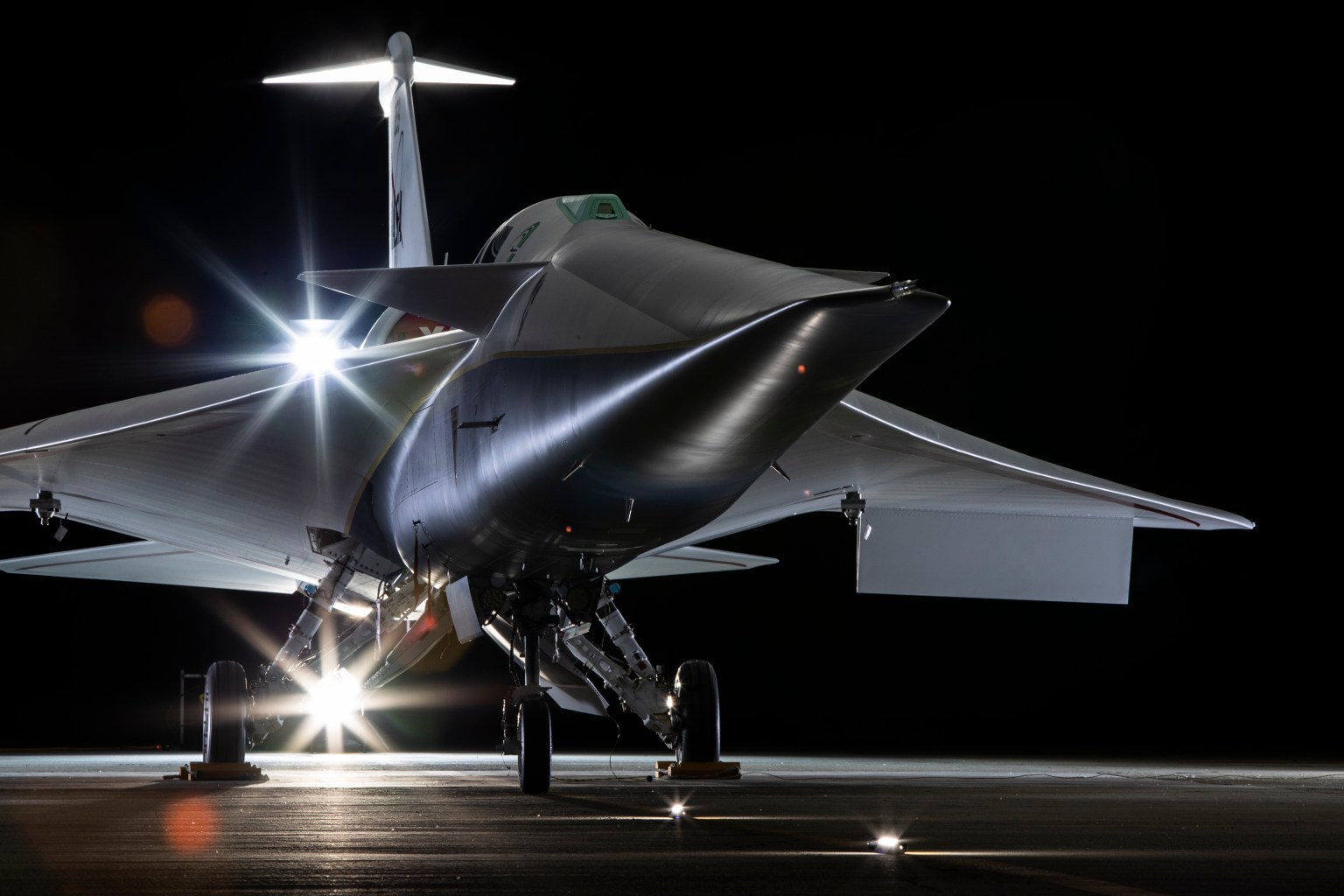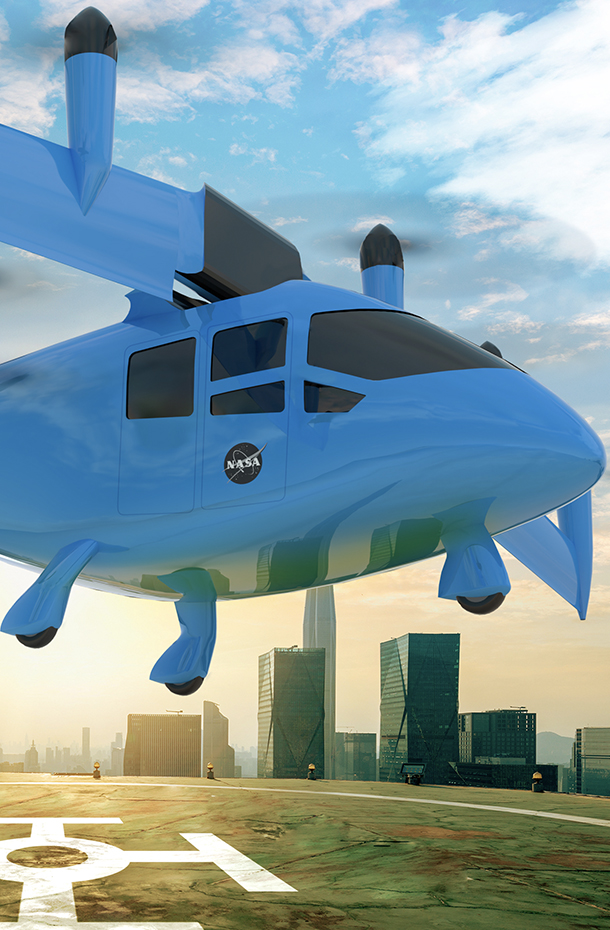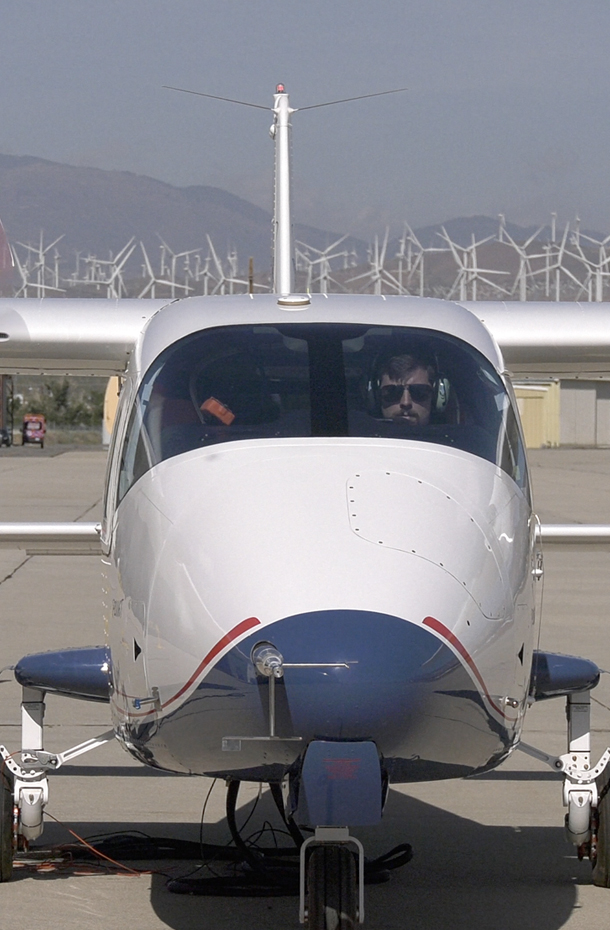LEGEND: ARMD NASA CENTERS
ARC = Ames Research Center
AFRC = Armstrong Flight Research Center
GRC = Glenn Research Center
HQ = Headquarters
LaRC = Langley Research Center
Technology and Innovation
Winner (Individual)
Dr. Marian Nemec (ARC)
Awarded to Nemec for his development of parallel adjoint framework software for aerodynamic shape optimization, which provides an unprecedented ability to design supersonic aircraft with low-level sonic booms – an advancement that may someday allow supersonic aircraft to fly over land. The framework is also used to design environmentally responsible commercial aircraft with ultra-high bypass ratio engines. Its methodology is hundreds of times faster than competing techniques in driving and modifying a vehicle’s shape to meet the designer’s goals. It has enabled the design of more efficient future aircraft concepts tested in NASA Ames’ 11-foot transonic wind tunnel, and is being used by designers at Ames, NASA’s Langley Research Center, the Boeing Company, and Gulfstream Aerospace.
Winner (Group)
Synthetic / Enhanced flight Vision Systems (SEVS) Team
Awarded to the SEVS team for developing and testing technologies that could greatly enhance future flight operations by eliminating delays due to weather. The group conducted extensive flight and ground simulation testing of a system including sensors, computer-generated imagery and displays that enables pilots to see when their natural vision is obscured by weather such as clouds, fog or rain. By creating a virtual electronic view of the terrain, obstacles and traffic outside the cockpit, SEVS provides the ability to make real-time adjustments for low visibility conditions, and improve surface, arrival and departure operations. In addition to simulations on the ground that included pilots, a flight test of SEVS was conducted with partners Honeywell, Gulfstream and the FAA. Data is being analyzed, and will be applied by the FAA and shared with industry to help guide technology development.
TEAM LEAD: Randall Bailey (LaRC)
View Group Winners
Honorable Mention (Group)
Controller-Managed Spacing / Air Traffic Management Tech Demo (CMS-ATD-1) Team
Awarded to the CMS-ATD-1 team for their development under aggressive deadlines of an ambitious technology demonstration project to illustrate the potential benefits of integrating a variety of NASA air traffic management technologies that have, on their own shown significant potential efficiency benefits. The project includes multiple simulations involving numerous research labs to evaluate new procedures for improving air traffic flow.
Team Lead: John Robinson (ARC)
View Honorable Mention Team
Leadership and Management Excellence
Winner
Dana Purifoy (DFRC)
Awarded to Purifoy for exemplary leadership and management skills while leading the Subsonic Research Aircraft Testbed (SCRAT) modification team at NASA’s Dryden Flight Research Center. An accomplished research pilot himself, Purifoy overcame a set of tough scheduling and funding challenges to complete modification of the Gulfstream G-III aircraft on time, within budget, and in compliance with research objectives. Because of Purifoy’s abilities to negotiate, plan, partner, and even pilot – he flew two test missions on SCRAT—the operational and heavily instrumented aircraft was ready for release on time to another NASA aeronautics research team for use in their project. Purifoy’s use of the Critical Chain Project Management tool, and other lessons learned regarding checklists and resource planning, are being shared with all aeronautics research centers at NASA.
Honorable Mention
Dr. Parimal Kopardekar (ARC)
Awarded to Kopardekar for new pioneering efforts to develop several innovative initiatives in the airspace systems area to coalesce the technical community, and for his ongoing inspiration to the research community in which he works.
Program and Mission Support
Winner (Individual)
Antonio Rippe (LaRC)
Awarded to Rippe for his innovative contributions to project management with NASA’s Environmentally Responsible Aviation (ERA) Project. Through his expertise in integrating cost, schedule, risk and technical content, Rippe supplied valuable “risk-informed” recommendations to management, helping to ensure the successful review and adoption of eight new technology efforts for ERA’s phase two research portfolio. His ability to carefully and continuously obtain and weave inputs from team members made Rippe a key contributor to the project. His work and tailored methodology have set a precedent in the application of “risk-informed” assessment tools to aid future projects from planning through implementation.
Winner (Group)
Aeronautics Research Mission Directorate (ARMD) Outreach Team (HQ)
Awarded to the ARMD Outreach Team for their work to communicate the value and societal benefits of NASA aeronautics research to decision-makers and to the general public through an unusually high number of NASA and ARMD events in FY12 (October 1, 2011-September 30, 2012). Involving staff from NASA Headquarters and all four aeronautics research centers, the team coordinated an integrated plan of outreach and education activities to ensure inclusion of aeronautics messages at four agency space shuttle disposition multiple day events, a multi-day national science festival, a first-ever aeronautics event on Capitol Hill, and two major air shows that included school visits. Nearly one million one-on-one interactions were achieved by Outreach Team members, significantly elevating awareness of NASA’s role in improving the nation’s air transportation system.
View Group Winners
Team Lead: Anthony Springer (HQ)
Honorable Mention (Individual)
Anthony Springer
Awarded to Springer for his leadership in integrating ARMD communications and education activities within multiple major outreach events, and for his overarching vision that results in activities, systems or processes that are often adopted by the entire agency.
Honorable Mention (Group)
Propulsion Systems Laboratory (PSL) Icing Engine Contract Team (GRC)
Awarded to the PSL Icing Engine Contract Team for exemplary performance in research, legal, and procurement support that enabled the completion of a fast-track agreement between NASA and Honeywell to acquire an engine for validation of the new icing capability in the PSL at NASA’s Glenn Research Center.
Team Lead: Michael J. Oliver (GRC)
View Honorable Mention Team
Strategic Partnerships
Winner
Dr. Brenda Henderson (GRC)
Awarded to Henderson for her work as the NASA lead on a jet noise research program with the Office of Naval Research, leveraging the strengths of NASA and the Department of Defense (DoD) in advancing the state of the art for low-noise exhaust systems for future high-performance engines. The program’s goal is to better understand the environmental impact of jet noise from high-performance military aircraft engines and to find ways to reduce future noise impact – knowledge that can be applied to aircraft explored in NASA’s High Speed Project such as supersonic jetliners. Henderson led the creation of a national jet noise technology road map that defines and integrates activities in research across several government agencies. As a result of her efforts, substantial collaboration has developed between the DoD in and NASA in the area of jet noise research.
Honorable Mention
James Griner (GRC)
Awarded to Griner for his success in developing strong, mutually beneficial ongoing strategic partnerships to develop communication system requirements for civil command and control of unmanned aircraft systems (UAS). Communications systems are a key enabler for a global transportation system that allows routine access of all classes of UAS.
High Potentials
Winner
Joshua Holladay (ARC)
Awarded to Holladay for his work with NASA’s Airspace Systems Program in the area of separation assurance. A graduate student at the University of California-Santa Cruz and intern at NASA’s Ames Research Center, Holladay demonstrated uncommon creativity and initiative in developing promising new solutions including a fast-time simulation platform designed to help explore the options for more efficient use of the separation space between airborne and ground-based vehicles. The tool requires less time and far fewer resources than simulations done to study this issue, which typically involve multiple human actors and extensive hardware. His work offers an inexpensive platform for researchers to achieve consensus in experiment design, to objectively compare different approaches to assuring safe separation between vehicles, and to connect separation assurance efforts between two NASA centers. On his own initiative, Holladay also developed a software configuration management solution for an application used by many NASA researchers that will improve consistency.
Winner (Group)
Ames Aeronautics Academy—Tilt Rotor Analysis Crew (TRAC)
Awarded to the TRAC team for advancing the state of the art and directly contributing to solving an ARMD technical challenge by developing a feasible design for a new class of vertical lift heavy transport aircraft. Their work exceeded NASA’s Rotary Wing Project’s efforts to date by understanding the scaling issues related to very large passenger civilian vertical lift transports (up to 300 passengers). In just eight weeks, the team of three summer academy students at NASA’s Ames Research Center reviewed current designs and extrapolated a new engineering approach, demonstrating great potential and skills in a variety of aeronautics disciplines and sciences.
Team Lead: Guillermo Costa (ARC)
ARMD Associate Administrator Award



























